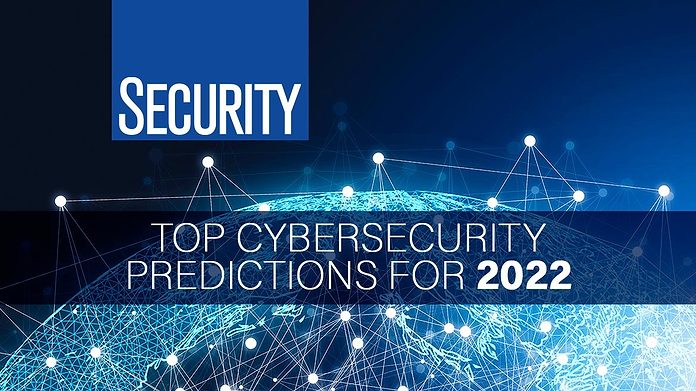Be cautious of Deepfake Social Engineering Attacks in online interactions.
Be cautious of Deepfake Social Engineering Attacks in online interactions.
Blog Article
Leading Cybersecurity Predictions for 2024: Stay Ahead of Emerging Threats
As we come close to 2024, the cybersecurity landscape is poised for substantial change, driven by arising hazards that organizations need to not only prepare for however likewise strategically address. The surge of AI-driven cyberattacks, coupled with significantly sophisticated ransomware strategies, highlights the urgent requirement for innovative defenses. Additionally, the expanding variety of IoT devices offers brand-new vulnerabilities that might be exploited. With regulative changes imminent and an essential emphasis on cybersecurity training, it is essential for organizations to reassess their methods to stay resistant. How prepared are you to browse these progressing challenges?
Rise of AI-Driven Attacks
As organizations increasingly take on man-made knowledge innovations, the possibility for AI-driven assaults is ending up being an extremely important problem in cybersecurity. Cybercriminals are leveraging AI to improve the sophistication and efficacy of their strikes, developing a landscape where typical security steps may fail. These strikes can exploit artificial intelligence formulas to determine vulnerabilities in systems and networks, leading to much more targeted and damaging breaches.
AI can automate the reconnaissance stage of a strike, allowing adversaries to collect huge quantities of information rapidly (cyber resilience). This capacity not only reduces the time required to release an assault yet likewise increases its precision, making it harder for defenders to expect and mitigate risks. In addition, AI can be made use of to produce convincing phishing systems, produce deepfake content, or adjust data, further making complex the cybersecurity landscape
Organizations should focus on the combination of AI-driven cybersecurity solutions to respond to these emerging hazards. By utilizing advanced danger detection systems, companies can enhance their capacity to identify and counteract AI-generated attacks in actual time. Continuous financial investment in training and awareness programs is likewise essential, as it outfits workers to identify and react to possible AI-driven threats successfully.
Enhanced Ransomware Sophistication
The increase of AI-driven assaults is not the only fad improving the cybersecurity landscape; ransomware strikes have actually likewise progressed, coming to be progressively advanced and targeted. As cybercriminals improve their methods, organizations deal with enhanced risks that require adaptive methods to alleviate possible damages.
Modern ransomware hazards currently utilize progressed strategies, such as dual extortion, where aggressors not only encrypt data but also intimidate to leakage delicate info if their demands are not met. This adds an additional layer of stress on targets, commonly compelling them to pay ransom money to shield their online reputations and client trust.
Furthermore, the usage of automated tools and artificial intelligence algorithms by criminals has structured the assault process, enabling them to identify vulnerabilities more efficiently and tailor their techniques against specific targets. Such growths have actually resulted in an alarming rise of assaults on crucial infrastructure, healthcare systems, and supply chains, stressing the requirement for robust cybersecurity structures that prioritize real-time threat discovery and reaction.
To respond to these advancing dangers, organizations need to invest in thorough training, advanced security innovations, and incident feedback plans that include lessons picked up from previous ransomware events, guaranteeing they remain one action ahead of progressively complex assaults.
Development of IoT Susceptabilities
With the quick expansion of the Net of Things (IoT), susceptabilities related to these interconnected gadgets have ended up being an important concern for companies and people alike. The proliferation of clever devices, from home appliances to commercial sensing units, has produced a large attack surface area for cybercriminals. Several IoT devices are released with marginal security procedures, usually making use of default passwords or out-of-date firmware, making them vulnerable to exploitation.
As gadgets come to be interconnected, the potential for large-scale assaults boosts. Compromised IoT gadgets can serve as entry points for aggressors to infiltrate more protected networks or launch Distributed Denial of Service (DDoS) attacks. The absence of standardization in IoT security measures more exacerbates these susceptabilities, as differing manufacturers implement varying degrees of protection
In addition, the raising refinement of malware targeting IoT devices poses substantial threats. Hazard stars are continually establishing new methods to exploit these weaknesses, leading to possible information breaches and unauthorized access to sensitive info. As we move into 2024, organizations must focus on IoT safety, executing robust actions to secure their networks and reduce the risks connected with this quickly growing landscape.
Governing Modifications Impacting Security

In 2024, we anticipate to see more rigid conformity demands for organizations, particularly those that make or deploy IoT gadgets. The intro of regulations such as the European Union's Cyber Strength Act and updates to existing frameworks like the NIST Cybersecurity Framework will certainly stress safety and security by layout. Organizations will certainly be mandated to execute robust protection measures from the preliminary phases of item development, making sure an aggressive position against potential vulnerabilities.
Additionally, governing bodies are likely to impose significant charges for non-compliance, engaging organizations to focus on cybersecurity investments. This shift will not only enhance the general safety pose of companies yet will certainly also foster a culture of responsibility in securing customer information. As regulations tighten, the onus will increasingly fall on companies to demonstrate compliance and protect against the ever-evolving risks in the digital landscape.
Emphasis on Cybersecurity Training
Organizations' commitment to cybersecurity training is becoming increasingly crucial as risks develop and attack vectors multiply. With cybercriminals continuously creating innovative methods, it is vital for workers in any way levels to comprehend the risks and identify their role in reducing them. Comprehensive training programs equip staff with the expertise and abilities needed to determine potential risks, such as phishing strikes, social design strategies, and malware.
Furthermore, a society of cybersecurity recognition promotes vigilance amongst workers, decreasing the likelihood of human mistake, which stays a significant susceptability in numerous organizations. Regularly upgraded training modules that mirror the most current risks will certainly make sure that staff continue to be educated and capable of reacting efficiently.


In 2024, companies will likely focus on recurring education and learning and simulation workouts, making it possible for employees to practice their response to real-world scenarios. Collaboration with cybersecurity experts for tailored training services may likewise end up being much more prevalent. Eventually, spending in worker training not only strengthens an organization's defense stance yet additionally grows a positive technique to cybersecurity, strengthening the notion that safety and security is a shared duty throughout the business.
Final Thought
In conclusion, the cybersecurity landscape in 2024 will be shaped by the surge of AI-driven strikes, significantly innovative ransomware tactics, and the growth of vulnerabilities associated with IoT gadgets. A strong emphasis on detailed cybersecurity training will certainly be crucial in growing a business culture resilient to arising hazards.
Report this page